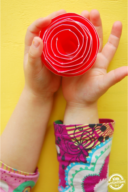What is an atom? The definition of an atom is pretty simple – atoms are the building blocks of basically everything. If it can be weighed and takes up space, it is made of atoms. Atoms are so small they can’t be seen with a regular microscope. So how do we even know they exist? What does an atom look like?
If you are a classroom teacher, homeschooling parent, or just a science enthusiast, we’re sharing lots of learning and teaching resources about atoms. Download our free, printable atomic structure worksheet and keep reading to learn all about atoms.

What is an Atom?
Atom Definition: the basic unit of a chemical element.
The atom is considered the basic building block of matter. Anything that has a mass—in other words, anything that occupies space—is composed of atoms.
UniteD States Nuclear Regulatory Commision
I don’t know about you, but when I think of chemistry, I think of a little guy in a lab coat wearing safety glasses and cackling about his inventions.
But chemistry is a lot bigger than that. Chemistry is all around you. Chemistry is the study of what everything is made of and how those things interact with each other. You already know that atoms make up everything can be weighed and take up space. So chemistry is the study of:
- atoms,
- parts of atoms,
- how those atoms interact with each other,
- And how those atoms bond (or connect) to make molecules. Molecules are a group of atoms that have bonded together.

to test your knowledge about the Parts of an atom.
What are the parts of an atom?
Atoms are made up of even smaller bits called subatomic particles. There are 3 subatomic particles: protons, neutrons, and electrons.
- Protons have a positive charge
- Neutrons don’t have a charge
- Electrons have a negative charge
Protons and neutrons are found in the center of the atom, called the nucleus. The electrons surround the nucleus like a cloud, moving in waves.
Generally speaking, protons with their positive charge attract. Electrons with their negative charge push away. But much like a magnet, opposite charges attract each other. And the same charge will push each other away. This is a core concept for how different atoms interact with each other.
If atoms are the smallest building blocks, how can they have smaller parts inside?
Remember the definition of an atom? It is the basic unit of a chemical element. If you break that atom down further into its smaller subatomic particles, it stops being that element.
For example, you might be familiar with the element oxygen. It is in the air we breathe. If you separate an atom of oxygen into its subatomic particles, those particles no longer act like oxygen, they are something different. So a single atom of oxygen is the smallest particle you can have and still be oxygen.

What Does An Atom Look Like?
It is actually a lot harder than it sounds to describe exactly what an atom looks like because they are so small they can’t be seen with your eyes or with a normal microscope. Our understanding of what atoms look like comes more from how atoms behave than what can actually be seen.
Scientists use models of atoms to describe and show others what they think atoms look like and how they behave. Atom diagrams are an important part of teaching and learning about atoms.
Download our atom model worksheet to see what you know about the parts of an atom.
ATOM Vocabulary to Know
- Atom – the basic unit of a chemical element.
- Element – a substance made up of only one kind of atom.
- Subatomic particles – the smaller particles that make up an atom: neutrons, protons, and electrons.
- Proton – a positively charged subatomic particle that is part of the nucleus.
- Neutron – a subatomic particle with no charge that is part of the nucleus.
- Electron – a negatively charged subatomic particle that surrounds the nucleus and moves in a wave around it.
- Molecules – atoms that are chemically bound together.
Resources we Love about Atoms, Elements, and Molecules
We love this video about atoms. It does a good job explaining the structure of an atom, subatomic particles, and molecules.
The video below shows more information about the history of atoms and their discovery, experiments that were conducted to discover the elements on the periodic table, and the coolest microscope ever —> one that can actually see atoms!
This video from the Smithsonian Science Center explains the relationship between atoms and cells. (It also gently points out that the way we teach the science of atoms to kids can make it tough for them to make important connections!)
This article contains affiliate links.
Science Games We Love about Atoms, Elements, and Molecules:
I’ll be honest, I was not looking forward to playing a card game about chemical bonds. But this card game was pretty fun. I am also really surprised how much my kids learned (and I remember!)

Do you love puzzles? We always have a puzzle in the works on the table in our dining room. We are currently working through this Periodic Table of Elements puzzle. Expert tip: understanding why the Periodic Table of Elements is organized as it is, is really helpful in putting the puzzle together!

Science Experiments and Activities about Atoms
- Build your own atom model with the supplies you have at home right now.
- Here are 10 cool ways to learn about atoms and molecules.
- Learn to draw an atom model in 6 easy steps.
- Zentangles are the most relaxing, rewarding coloring pages, even for older kids and adults. Check out the atom zentangle coloring page.
- Check out the Periodic Table of Elements Worksheet. Can you color-code the element groups correctly? First, learn why the Periodic Table is color-coded to begin with. Hint: it is not just because it looks cool!
Teaching Aids For Atoms, Elements & Molecules:
If your kids love hands-on activities, nothing will help your child really grasp the concept of atoms and molecules more than building them with a model set. We have a Chemistry Molecular Model set by Molymod that has been really great for my kids!

My youngest daughter is my science kid and loves Chemistry. These Periodic Table flash cards were at my dinner table every night for weeks.

Homeschool Chemistry Curriculum and Science Enrichment for Kids
We are a homeschooling family, which was not our original plan. I’m seriously as shocked as anyone how we ended up here. But the one thing I love most about being a homeschool mom is that I can follow my kids down all sorts of rabbit holes when they are truly interested in something. And my youngest child is a science kid through and through.
- My favorite chemistry curriculum is Biochemistry Literacy for Kids. It is a thoughtful, meaty science curriculum. When deciding to buy the program, it struck me that if someone had explained atoms and molecules to me as well as the young girl that appears in the video on the homepage, science and chemistry would have felt so much more accessible to me — and definitely more fun!
We are not through the whole program yet. But so far it has been a huge hit. Lessons are video-based, with guided notes and answer keys provided, and there is an optional virtual class once a week. The best part of the program is that from the first class, the instructor has the kids get hands-on building molecules with a Molymod kit and online with Pymol, a 3D program that lets you see and manipulate molecules. (Pretty cool, right?!?) - If your kids prefer a book-based curriculum, I also really like Real Science Odyssey. There is a Level 1 Chemistry program that is good for grades 2-5. The lessons themselves are open and go but you will need to collect goodies for experiments before class time.
- If your kids like video-based learning but Biochemistry Literacy for Kids is too much of a good thing, check out the chemistry course by Science Mom. She and her husband (Math Dad!) do a great job of making science fun and accessible for kids in the program. They also provide guided notes for the course – in cartoon format!





















0